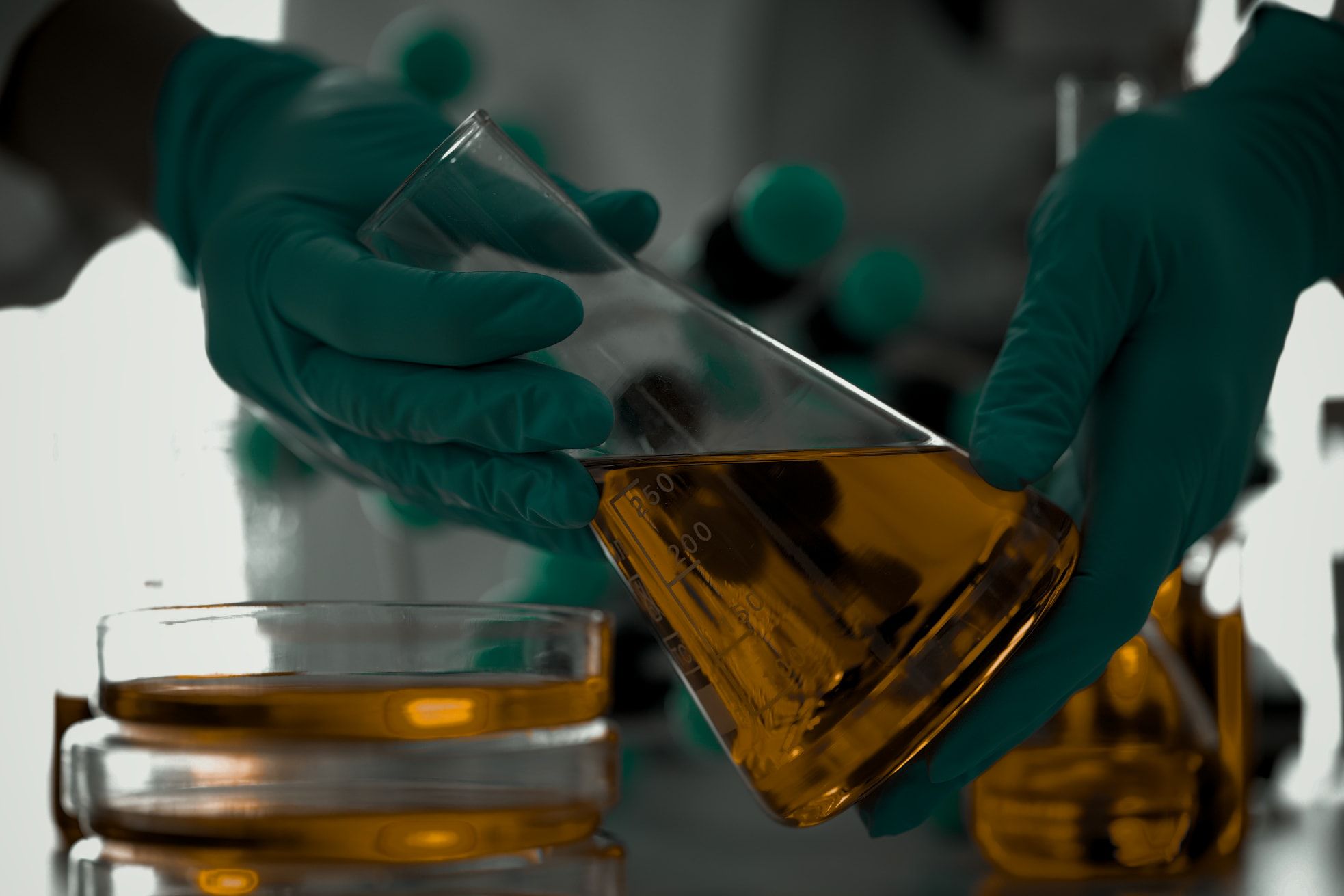-
CAS64742-82-1
-
Structural formula
C₄H₁₀ bis C₁₁H₂₄
Remove white spirit from the exhaust air
What is white spirit?
White spirit, also known as light petrol or petroleum ether, is a colourless, volatile liquid consisting of a mixture of different hydrocarbons. This mixture typically contains alkanes, cycloalkanes and aromatics. It is often used as a solvent in laboratories and the chemical industry, especially in extraction processes and cleaning applications. White spirit plays an important role in chemical analysis and synthesis due to its good solubility for organic compounds.
Origin
White spirit is produced by the distillation of crude oil in refineries. It is used in various industrial processes, including the production of paints, varnishes, adhesives and cleaning agents. It is also used in laboratories for extractions and as a solvent in chemical analyses.
Recognition
White spirit is a colourless liquid with a characteristic, petrol-like odour. It can irritate the skin and eyes and its vapours can cause headaches, dizziness and drowsiness. Due to its volatile nature, white spirit can easily evaporate and form flammable vapours.
Limit values
The Technical Instructions on Air Quality Control (TA-Luft) specify limit values for white spirit emissions in order to protect people and the environment. The OEL for white spirit varies depending on the specific composition, but is typically 300 mg/m. This value indicates the average concentration of a substance in the air at the workplace at which no adverse health effects are to be expected.
Hazards
Health: High concentrations of white spirit can cause respiratory irritation, dizziness, headaches and drowsiness. Long-term exposure can damage the nervous system and lead to neuropathies. If swallowed, there is a risk of poisoning, which can cause nausea and vomiting. Environment: White spirit is not easily biodegradable and can contaminate water and soil in high concentrations, which can damage flora and fauna. It can disturb the ecological balance. Economic damage: Improper handling of white spirit harbours the risk of explosion and fire, which can lead to considerable material damage and production losses. High insurance costs and legal consequences are also possible risks.
The oxytec Purification Technology
For many organic pollutants, we offer energy-saving and clean technologies for neutralisation, which we combine in multi-stage plants. In order to achieve a reduction below the limit values, not only the dimensioning of the respective purification stage but also the sequence of the technologies is decisive, as they have different physical effects on the molecules. Below we present some of our purification modules.
CWA
Alternative technologies
In addition to our solutions, there are other technologies such as conventional activated carbon filters and simple ventilation systems. However, these often have disadvantages such as high energy consumption, limited cleaning performance, large space requirements, long lead times and high investment costs.
Advantages of the oxytec solution
- Compact design: Small footprint compared to traditional systems.
- Low operating costs, therefore rapid amortisation
- Environmentally friendly: Minimal environmental impact thanks to innovative technologies
- Efficient white spirit reduction: High efficiency thanks to high cleaning levels with minimal energy consumption
